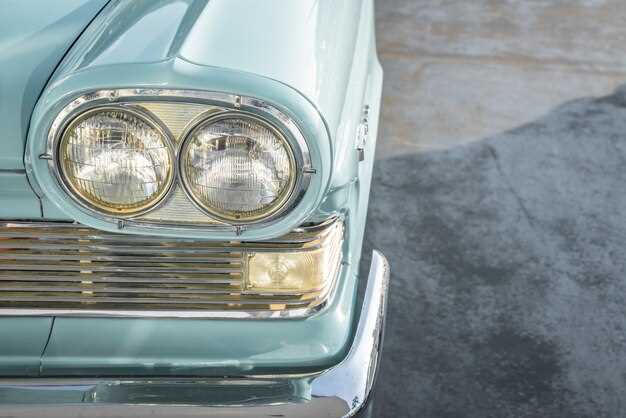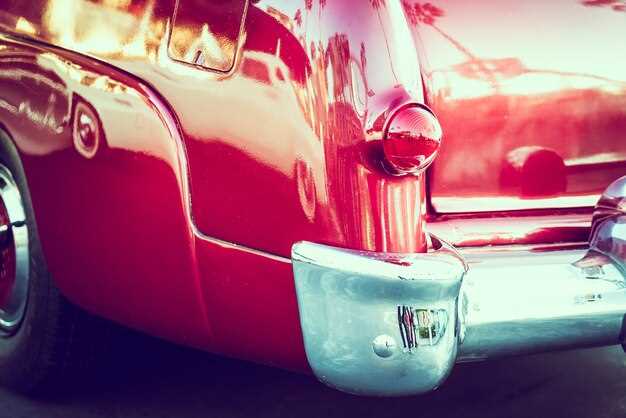
Getting your classic car ready for a show is a rewarding but detailed process. Attention to detail is crucial, as the presentation of your vehicle can significantly impact judging and overall impressions. Whether you’re a seasoned exhibitor or a newcomer to the classic car scene, knowing what steps to take can enhance your vehicle’s appeal and showcase its unique charm.
First and foremost, thorough cleaning and detailing of your car is essential. Begin with a complete wash, ensuring the removal of dirt and grime. Next, moving on to waxing and polishing can give your vehicle that desired glossy finish. Don’t forget to clean the wheels and tires, as these elements often attract attention and can reflect your overall commitment to care.
Additionally, it is vital to check all mechanical components. A well-functioning engine not only ensures a smoother operation during the event but also presents a reliable image to potential buyers or judges. Inspecting the fluid levels, battery health, and brakes can prevent any unexpected issues on the day of the show.
Finally, consider grooming your interior meticulously. New floor mats, a cleaned dashboard, and well-maintained upholstery can make a significant difference in the overall look and feel of your classic car. A clean and inviting interior can serve to enhance the admiration your vehicle receives, showcasing both its history and your dedication to its preservation.
Deep Cleaning: Best Practices for Exterior and Interior

Deep cleaning your classic car is essential for achieving that showroom shine. Start with the exterior, focusing on a dedicated washing process. Use a pH-balanced car shampoo to avoid damaging the paint. Begin by rinsing the car thoroughly to remove loose dirt and debris. Use a microfiber wash mitt, applying the soap in a top-to-bottom manner. This method prevents dirt from being dragged across the paint and causing scratches.
After washing, rinse off the soap completely. To dry the car, utilize a soft microfiber towel to avoid water spots. Pay attention to creases and seams where water may accumulate. Once dry, apply a high-quality wax or sealant to enhance the surface and provide a protective layer against elements. Consider using a clay bar to remove embedded contaminants, ensuring a smooth finish before waxing.
For the windows, use a glass cleaner specifically designed for automotive use. Avoid ammonia-based products to prevent tint damage on older models. Clean the glass both inside and outside using a microfiber cloth to achieve a crystal-clear look.
Moving to the interior, start by removing all personal items and trash. Vacuum the carpets, seats, and areas under the mats to eliminate dirt and debris. Use an upholstery cleaner that is suitable for the specific materials, whether leather, vinyl, or fabric. For leather seats, apply a conditioner after cleaning to maintain suppleness.
Wipe down all surfaces with a quality cleaner, paying extra attention to the dashboard, knobs, and steering wheel. This not only cleans but also protects against cracking and fading. For wood or vinyl trim, use products designed for those materials to enhance their appearance and prevent damage.
Don’t forget to address the headliner and any fabric elements inside the car. Use a gentle fabric cleaner to treat spots and stains without damaging the materials. Finally, finish with an air freshener or odor eliminator to keep the interior smelling fresh for the show.
Detailing Techniques: Enhancing Engine Bay and Undercarriage Appeal
Detailing the engine bay and undercarriage of your classic car is crucial for showcasing its overall quality during a show. A clean and polished engine compartment highlights attention to detail and reflects the care you have put into your vehicle. To achieve the best results, follow these techniques.
Start with a thorough cleaning of the engine bay. Use degreaser to remove oil and grime, applying it to cold surfaces to avoid damage. Rinse gently with water, taking care to cover sensitive electrical components with plastic bags. After the initial clean, use a soft brush to scrub tight areas and ensure all dirt is removed.
Once clean, dry the engine bay with microfiber towels to prevent water spots. Next, apply a protective dressing to plastic and rubber components. A silicone-based product will restore a like-new appearance while protecting against UV damage. Be careful not to overapply; a light coat is sufficient for a clean finish.
For the undercarriage, start by cleaning the tires and wheels. Use a wheel cleaner and a stiff brush to remove brake dust. Afterward, wash the underbody with a pressure washer or hose to dislodge mud and road debris. For tougher buildup, consider using a safe undercarriage cleaner that effectively breaks down grime.
After cleaning, inspect the undercarriage for any areas that need additional attention, such as rust spots. Treat these areas with appropriate rust inhibitors or paints. Additionally, you can apply a protective spray to help prevent future rust and maintain a clean appearance.
Finishing touches include dressing the tires and inspecting all components, ensuring that everything is in working order. A well-prepped engine bay and undercarriage not only enhances visual appeal but also reflects the pride of ownership in your classic car. Invest time in these details to impress judges and fellow enthusiasts alike.
Final Touches: Last-Minute Checks Before the Event

As the day of the car show approaches, it’s essential to perform some final checks to ensure your classic car looks its best and operates smoothly. Begin by thoroughly cleaning both the interior and exterior. Use a high-quality car wash soap for the exterior and a gentle cleaner for upholstery and carpeting. Pay attention to details like door jambs and the engine bay, as these areas are often overlooked.
Next, inspect the paintwork for any scratches or blemishes. A good polish or wax can enhance the shine and protect the finish. If you notice any minor imperfections, consider using a touch-up pen to make quick repairs. Make sure all chrome and metal pieces are polished to a mirror finish, as this adds to the overall presentation of the vehicle.
Don’t forget about the tires; they should be clean, properly inflated, and have no visible damage. Use tire shine to enhance their appearance, but avoid over-applying it. Check the wheels for brake dust and grime and give them a good scrub to ensure they complement the car’s look.
Next, verify that all lights, including headlights, brake lights, and turn signals, are functioning correctly. This not only ensures safety but also demonstrates that your vehicle is well-maintained. Replace any burned-out bulbs with new ones before heading to the show.
Inspect under the hood for any leaks or signs of wear. Fluids should be topped off, including oil, coolant, and windshield washer fluid. Make sure the battery terminals are clean and secure, as issues with the electrical system can arise unexpectedly.
Also, check your registration and insurance documents to ensure they are current. Having these readily accessible can prevent any last-minute hassles. Pack any accessories you might need at the show, such as chairs, cleaning supplies, or display materials.
Finally, take a moment to step back and appreciate your hard work. A final look can help you spot anything that might need adjustment. With your classic car polished and prepped, you’ll be ready to make a memorable impression at the event.
